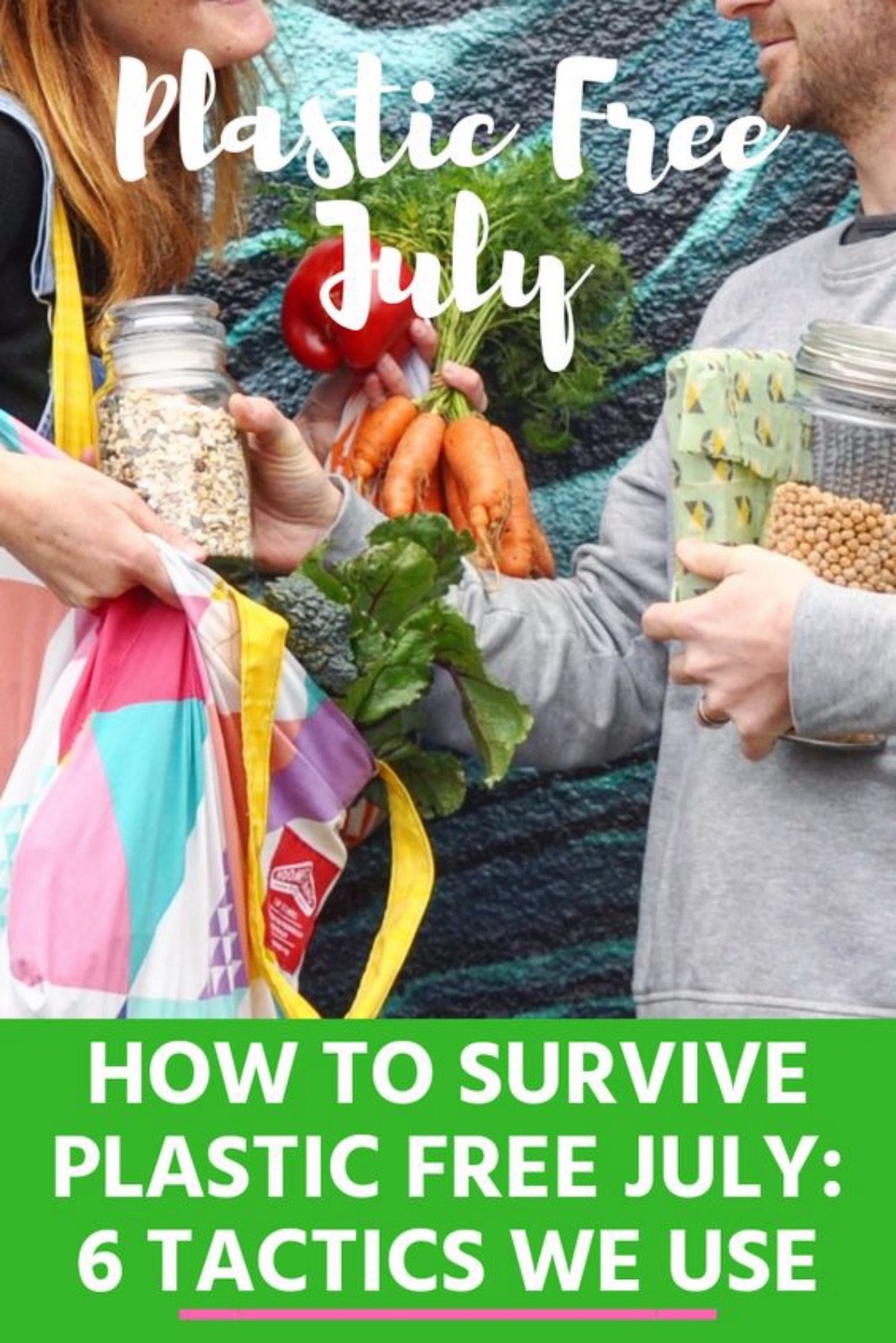How To Survive Plastic Free July: 6 Tactics We Use
Are you doing Plastic Free July this year? Looking for tips on how to tackle a month free of plastic? We’ve got six survival tactics and loads of advice on how to survive Plastic Free July…
Plastic Free July is a campaign led by not-for-profit organisation, Plastic Free Foundation that was started by a small team in local government in Western Australia. The first Plastic Free July was in 2011 and since then it has become an influential worldwide campaign that millions of people across the globe take part in every year.
It helps people from all walks of life and at all stages of their zero waste journey to look at the waste they are producing and to commit to reducing this waste for the month and beyond through breaking bad habits and forming new, more sustainable ones.
If it’s your first Plastic Free July or you find yourself struggling with certain aspects of a zero waste lifestyle, the below tips will help you get through a month of no plastic, especially number 6!
1. Plan ahead
A lot of waste can be avoided by planning ahead and being organised. Many of our fails happen because we have failed to plan or think ahead.
For example, when going grocery shopping, we plan our menu for the week so we only buy exactly what we’ve going to eat so no food waste, we plan what we’ll need to put each ingredient in when shopping - how many produce bags and what jars do we need to take? - we plan where we’ll shop to get everything we need without packaging.
Also, before leaving the house to go anywhere, we think about whether we will need any reusables where we are going and ask ourselves questions like: will we want takeaway coffees, will they be serving food in disposables, will there be leftovers to take home?
We then pack our bag (well, my backpack - I’m the packhorse in the relationship) accordingly. A lot of our reusables just stay in the bag, like wooden cutlery, chopsticks and a bamboo straw wrapped in a napkin and hankies, and my water bottle is always in the side pocket, but we only take heavy, large zero waste tools like our coffee cups and tiffin or stainless steel container if we’re going to need it.
Packing in snacks or your own lunch is another way that planning ahead saves waste, especially if you’re going to be on the go all day or have a stressful work day ahead of you - hunger and stress eating are the leading cause of giving in to plastic wrapped food!
2. Use reminders
At the beginning it is hard to remember to take the reusables you may need with you when leaving the house. To start forming the habit of thinking about whether you will need any of your reusables and packing them in, put up a few reminders in places you will see them before walking out the door.
Put a note on the fridge, set an alarm on your phone, hang a reminder on the door handle or hang a reusable shopping bag full of your reusables on the door handle. Whatever works for you!
You can read our Top Tips for Remembering Your Reusables here.
3. Get creative!
Of course, you can’t plan for everything and you sometimes have to think on your feet. Don’t give in immediately. Stop and think if there is another way you can avoid the looming single-use plastic item.
Forgot your shopping bags? See if there is an empty box you can use to take your groceries home in. Forgot your produce bags? Buy everything you can loose and use paper mushroom bags for things you need a bag for (and then reuse them!). Forgot your reusable coffee cup? Check if the cafe has a cup library, grab a mug from your work kitchen to use, or sit down and have it there quickly. Want something from the pastry display but have nothing to put it in? Ask them to put it straight in your hand.
There’s often a way around it if you search for one!
4. Use what you have rather than buying new
Don’t impulse buy any so-called ‘zero waste essentials’! We know it is tempting to buy beautiful, shiny new reusables and we fell into this trap ourselves when starting out, but try get by with using what you already have.
A lot of these items you already have will be made of plastic. You can’t expect to go completely plastic free in one month. It takes ages to clear a home of plastic. Years later we still use products made from plastic, but we haven’t bought any new plastic into our home.
Aim for no single-use plastic and no new plastic.
Items like plastic Tupperware containers are very useful for avoiding waste and saving food waste. It would be a waste to throw all of your old plastic containers out while they are still useable, so use plastic products that are still useful until they are no longer useable and then only replace them with better alternatives. This is not going to happen in a month.
If you do need to buy something new to help you reduce your waste, firstly see if you can get it second hand first and if buying new, buy a quality product that will last from a sustainability focused company. Sustainable purchasing takes time and research. Do your research to find the product that will suit your needs best so you don’t have to purchase something else down the track.
5. Be ready to say no thanks and to ask for what you want
A lot of the time waste can be avoided by simply saying no to something. It takes practice to get in the habit of refusing single-use plastic items you don’t want up front. Be ready to say “no straw please” when ordering a drink and “no bag thanks” when purchasing something, as well as “no receipt needed” and “no thank you” to flyers, free promotional items, and other things you don’t need that people try to hand to you.
It can take courage to start asking for special treatment like getting your takeaway in your own container. Again, the more you do it, the more normal it becomes for you and the more we all do it, the more normal it becomes for the people behind the counter serving the food.
Our number one tip for this is: be ready with your reusables and clearly and confidently ask for what you want. It can also help to explain why you are asking them to do it. Tell them you are doing Plastic Free July and trying to not use any plastic or single-use disposable items.
Start practicing our Daily Mantras of the Plastic Free!
6. Have fun with it!
Make it a challenge between you and your partner, you and the rest of the family, or you and your friends or work mates to see who can create the least plastic waste during July! Tally up how you’re each going every week and see where you’ve each failed and how you can each do better next week.
Making it a competition keeps you motivated (especially if you like to win!) and keeps it top of mind throughout the month. And it makes it more fun!
There’s a great documentary on going zero waste called The Clean Bin Project, in which a couple has a competition to see who can produce the least garbage. It’s funny and insightful and worth a watch to inspire you and show you what trying to reduce your waste really looks like!
Although plastic pollution is a serious problem, we can only do so much as individuals due to the society we live in, so don’t take any fails too hard, acknowledge it and think how you can maybe avoid it next time, then laugh it off and carry on doing the best you can to avoid as much plastic as possible.
If you want a challenge that shows you how to go zero waste over a number of weeks, you can follow our 8 Weeks To Waste Free Challenge, or simply choose an item of waste you want to eliminate and find a way to do it and then choose another and so on.
Good luck! You’ve got this! If you have any specific challenges you’re struggling to overcome or questions for us, we are happy to help. Ask us below in the comments or contact us directly.
*we maintain this site in our free time and support in any way, shape or form means a lot and helps us keep it running, whether it is using an affiliate link when investing in something, sharing our content, or buying us a coffee on Ko-fi.



